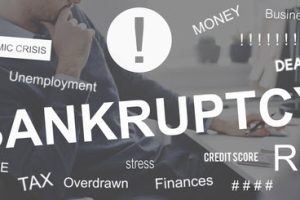Bankruptcy Month

Some observers believe that venerable retailer Sears may be getting a head start on the unofficial holiday that does not involve a gift exchange or warm nostalgic feelings, and so no one wants to celebrate it.
Just as the busy holiday shopping season started, Sears announced that it was closing several K-Mart locations and that two of its top executives had left to “pursue other career opportunities.” Over the last fifteen years, the retailer’s sales have dropped from $41 billion to a scant $15 billion; over the same period, partner K-Mart has fared no better, as its sales have declined from $37 billion to $10 billion. Spinoff Sears Hometown and Outlet Stores is doing even worse, and is expected to lose over $93 million this year. Citing concern about their financial health, several suppliers have reduced shipments to the retailers, and Moody’s recently downgraded the stores’ liquidity rating.
Former Sears Canada CEO Mark Cohen bluntly stated that “business is terrible” and that the company is not likely to recover.
Why People File Bankruptcy
Some practitioners call January “Bankruptcy Month,” because cash-on-hand and accounts payable are typically at their highest levels of the year in the month after Christmas. If they plan to stay in business, most large companies file Chapter 11 reorganization, because they come out with a fresh start. In fact, when General Motors recently emerged from Chapter 11 bankruptcy, the company unsuccessfully argued that it was the “new GM” and not legally responsible for the mistakes of the “old GM.” Those mistakes included selling cars with defective ignition switches. Economic downturn drives most corporate bankruptcies.
Families file bankruptcy for basically the same reason: to get fresh starts. However, the causes are much more diverse and can strike at any time of the year. Some common ones include:
- – Medical Bills: The government estimates that 20 percent of people have economically burdensome medical bills, and 10 percent of people have medical bills they cannot afford to pay.
- – Unemployment: Most families have virtually no savings, so most households simply cannot deal with a short-term income change.
- – Divorce: Similarly, the unexpected legal bills coupled with the added expense of maintaining two household forces many people into bankruptcy.
Chapter 7 normally eliminates unsecured debts within a few months, and Chapter 13 gives debtors up to five years to catch up on house payments and other delinquent secured debt.
Warning Signs
If sales fall off a cliff over a period of a year or more, the company is obviously in financial trouble and should at least make contingency plans for bankruptcy. Although illness, job loss, and divorce can strike at any time, it may be several months before the financial ramifications of these events sets in. So, most families probably know they should file bankruptcy long before they call lawyers.
There are some specific warning signs. If the household has less than about $10,000 in unsecured debt, most people can afford to pay that amount over time. But if the debt is larger, it is essentially impossible to pay it off, and delay only makes the problem worse. Similarly, if people are a month or maybe two behind on their car or mortgage payments, it is possible to catch up. However, a larger delinquency is simply too much to overcome, in most cases.
Count on Experienced Lawyers
If you see the warning signs of bankruptcy in January or any other month of the year, reach out to an experienced Chicago bankruptcy lawyer from the Bentz Holguin Law Firm, LLC. Convenient payment plans are available.
Resources:
cdc.gov/nchs/products/databriefs/db142.htm
aol.com/article/finance/2016/12/05/sears-is-on-the-brink-of-catastrophe-as-stores-closures-loom-and/21620815/


